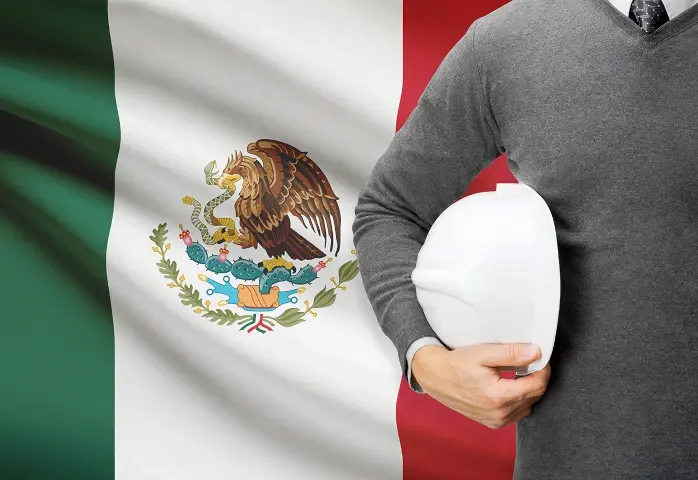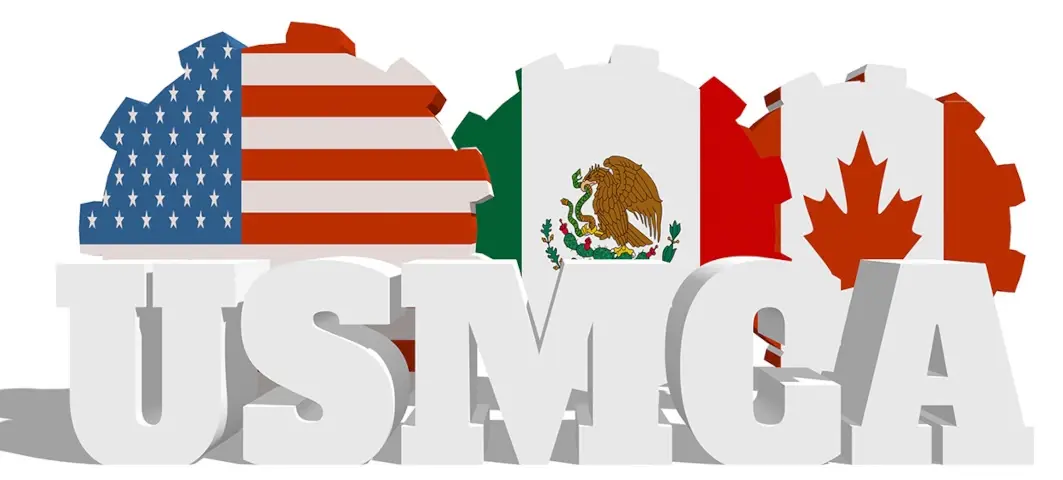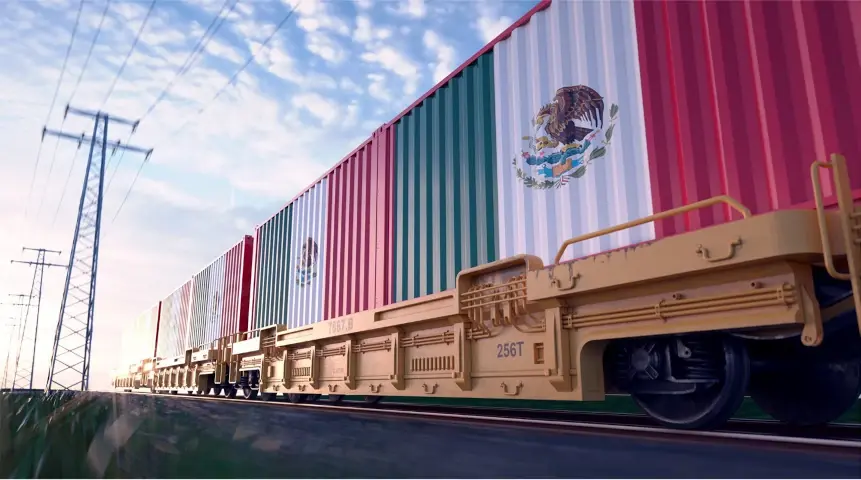What Makes Electronics Manufacturing in Mexico so Attractive?
Checkpoint
Mexico graduates an average of 115,000 - 130,000 technicians and engineers annually, making them an ideal source of skilled labor.

Nearshoring to Mexico is an ideal choice for most North-American companies that need volume PCBA manufacturing; in this post, we’ll dive into why you should consider Mexico for your electronics manufacturing needs.
One of the many questions companies must answer is where they’ll have their PCBA products manufactured. It’s essential to choose a manufacturer that’s both inexpensive and qualified. Additionally, decision-makers should consider regions that can help them minimize their legal risks.
Cost-Effective Manufacturing: Mexico's Competitive Labor Costs
High production costs lead to higher end-user costs and lower profits. Finding an affordable manufacturer is an essential factor in building a competitive product that sells well to your end user.

In the United States, the 2024 federal minimum wage is $7.25 per hour, and in many states, it’s as high as $17 per hour. In contrast, Mexico benefits from a significantly lower cost of living, which translates to reduced labor costs. Manufacturing wages in most areas of Mexico begin at $22 per day (or less than $3 per hour), with rates near the northern border slightly higher. This is significantly lower than the average labor rate in China, which, despite the common perception of low labor costs, is actually $6 to $7 per hour in 2024.
Demographics Drive Mexico’s Long-Term Appeal
While China has historically been a popular choice for low-cost manufacturing, its demographic trends pose challenges for long-term stability. China’s aging population, driven by decades of the one-child policy, has led to a shrinking workforce and increasing labor costs. This demographic shift means fewer younger workers to support manufacturing demands, raising concerns about labor availability and rising wages in the future.
In contrast, Mexico boasts a young and growing workforce, with a median age significantly lower than China’s. This demographic advantage ensures a steady pipeline of labor, offering manufacturers the stability needed to plan for the long term. Combined with Mexico’s proximity to the United States and robust trade agreements, this makes Mexico not only a cost-effective option but also a strategic choice for sustained growth and competitiveness.
A Skilled Workforce: The Backbone of Mexico's Electronics Industry

As the demand for Mexico-based manufacturing operations increases, so does the incentive for Mexico’s federal government and state governments to invest in personnel training.
Mexico graduates an average of 115,000 - 130,000 technicians and engineers annually, making them an ideal source of skilled labor. Electronics companies specializing in printed circuit board assembly (PCBA) and other highly technical manufacturing can easily find qualified workers in Mexico.
Further, Mexico’s universities take part in education-exchange programs with Southern California and San Diego universities. Because nearshoring to Mexico has become a widespread practice, many of the country’s engineering graduates already have on-the-job experience in technology manufacturing.
Mexico’s highly-skilled electronics manufacturing workforce consists mainly of younger generations. You’ll be able to find workers for new jobs quickly since many recent graduates are looking for work. More importantly, that workforce will be there for years to come.
Seamless Global Trade: Mexico's Strategic Trade Agreements

Trade agreements play a crucial role in reducing costs and safeguarding businesses. Mexico has negotiated 13 free trade agreements (FTAs) with more than 50 countries, creating one of the most expansive trade networks in the world. A key example is the United States-Mexico-Canada Agreement (USMCA), which has strengthened economic ties within North America.
Under the USMCA, many tariffs have been reduced or eliminated, lowering the cost of production for manufacturers operating in Mexico. This agreement also includes provisions for enhanced intellectual property (IP) protection, which is especially beneficial for technology companies. These protections reduce the risk of counterfeiting or IP theft, giving companies greater confidence in bringing innovative products to market.
Additionally, the USMCA has streamlined rules of origin, making it easier for goods produced in Mexico to qualify for duty-free treatment when exported to the U.S. or Canada. This provides significant cost savings while maintaining the high standards required in North American markets.
The Competitive Edge Over China
While Mexico has strengthened its trade partnerships, the ongoing trade war between China and the U.S. continues to create uncertainty for manufacturers relying on Chinese outsourcing. Tariffs on Chinese goods, which have been significant in recent years and may increase under new policy considerations, raise production costs and complicate supply chain planning. These tariffs drive up the cost of raw materials and finished goods while introducing lead time unpredictability, making it challenging for businesses to operate efficiently.
However, recent discussions in the U.S. regarding potential 25% tariffs on Mexican goods could also impact the cost dynamics of nearshoring. While Mexico’s extensive network of free trade agreements and proximity to the U.S. remain strong advantages, such tariffs, if enacted, could affect certain industries and cross-border supply chains.
Despite these possibilities, Mexico still offers a more stable and predictable environment compared to the volatility and higher risks associated with Chinese manufacturing. For many companies, the proximity to the U.S., combined with lower labor costs and enhanced intellectual property protections under agreements like the USMCA, continues to make Mexico an appealing nearshoring option—even as tariff considerations evolve.
Efficient Operations: Mexico's Robust Infrastructure

Mexico’s Growing Supply Chain Network
Mexico boasts a top-notch manufacturing infrastructure, and its government has invested significantly to ensure that manufacturers can operate without interruptions. A stable and reliable electrical grid supports operations, keeping production lines running efficiently.
In 2018, Mexico annouced the $20 billion Construction and Modernization Program, focusing on enhancing the country’s public transportation and industrial capabilities. This includes 14 projects to bolster energy infrastructure and five focused on improving industrial parks—clear indicators of Mexico’s commitment to attracting manufacturers and improving supply chain efficiency.
Road Infrastructure Between the U.S. and Mexico
With nearly 85% of Mexico’s exports destined for the United States, the road network between the two countries plays a critical role. Over the years, investments under NAFTA and the USMCA have strengthened border crossings, highways, and distribution centers to accommodate increasing trade volumes. Highways like the Pan-American Highway and connections through key border cities like Laredo, Texas, make over-the-road (OTR) freight the most commonly used transportation mode.
The quality and density of road infrastructure on both sides of the border ensure relatively smooth transport, with shorter lead times compared to ocean freight and greater flexibility than rail. Mexico’s trucking industry also provides cost-effective options, with well-established logistics routes and cross-border customs procedures designed for speed and reliability.
Rail Options: An Underutilized Mode
While rail networks exist between Mexico and the U.S., they are not as widely utilized as OTR freight. Factors include limited cross-border rail infrastructure and slower transit times for smaller shipments, which are often better suited to trucking. Additionally, the complexity of coordinating rail shipments, coupled with the need for more extensive terminal facilities at both ends, reduces rail’s competitiveness for time-sensitive deliveries. However, for large-volume shipments, rail remains a cost-effective alternative and could see growth with future infrastructure investments.
How the Jones Act Could Transform Logistics
Another underexplored transportation option between Mexico and the U.S. involves maritime shipping along the Gulf of Mexico. However, the Jones Act—a federal law requiring that goods transported by water between U.S. ports must be carried on ships that are U.S.-built, -owned, and -crewed—currently limits the feasibility of this approach.
If the Jones Act were modified or repealed, it could open new maritime routes, allowing Mexican goods to be shipped to multiple U.S. ports without costly compliance hurdles. This would diversify transportation options, reduce reliance on road and rail, and further streamline the movement of goods from Mexico to various regions of the United States. It could also relieve congestion at key border crossings and contribute to more efficient supply chains, especially for industries relying on large-scale imports.
Quality Assurance and IP Safeguards

The continuous improvement of the infrastructure, combined with Mexico’s educated, skilled labor force, leads to high-quality electronics manufacturing. Because Mexico is closer to the United States than China, your products will be less likely to get damaged along the way. Furthermore, you’ll be able to visit the manufacturing location more often and easily handle quality discrepancies.
In recent years, Mexico has also revised its intellectual property laws, enhancing protections for intellectual property. Mexico also belongs to the World Intellectual Property Organization which recognizes twelve different IP agreements. Meanwhile, counterfeit goods are produced in greater quantities in China than anywhere else in the world.
Ethical Manufacturing: Mexico's Commitment to Fair Labor Practices

Customers have become more concerned about social responsibility and product origins. Work weeks in Asia may be as long as 60 hours, whereas Mexico has a strict 48-hour weekly limit. Mexico also has strict regulations governing occupational safety and goes to great lengths to prevent child labor. Additionally, Mexico has mandates that ensure your goods aren’t made with contaminated materials, protecting you, the factory workers, and your customers.
Nearshoring Benefits: Why Mexico Outshines China for PCBA Manufacturing
Many electronics businesses find themselves choosing between Mexico and China. While both locations have low labor costs and skilled laborers, an often overlooked advantage of manufacturing in Mexico is its proximity. The time-zone difference between China and the United States is drastic, meaning you’ll either have to stay up late or wait a day or more to communicate with your manufacturer.

Visiting your manufacturing facilities is also easier when they’re closer to home. When products get made in Mexico, companies in the United States and Canada can visit the manufacturing facility more often. Flights are less expensive and faster than flying to China, meaning they won’t reduce your productivity or increase your business expenses.
Mexico’s proximity impacts transportation costs as well. Once your goods are manufactured, it’s cheaper and faster to receive them from Mexico than from China. Manufacturing locations in Mexico can get the finished product to the United States or Canada within 24-48 hours. Comparatively, you could wait two to four weeks to receive your products from China.
Manufacturing defects will sometimes happen, regardless of where your goods are manufactured. Still, these problems can be solved faster by manufacturers located close by in Mexico, thanks to the speed at which the goods can be shipped back to them.
Related Topics
Companies Bring Electronics Production Home From Asia
Lately, numerous companies have begun reassessing their global value chains and moving electronics production closer to home.
Surviving the Warehousing Squeeze
The warehousing crunch has put a strain on electronics companies that rely on quick delivery of electronic components or PCBAs, especially from overseas.
Electronics Made in America? You Need Workers First
Reshoring offers a solution to persistent problems of instability, lending companies the resilience needed to succeed now and into the future.
About MacroFab
MacroFab offers comprehensive manufacturing solutions, from your smallest prototyping orders to your largest production needs. Our factory network locations are strategically located across North America, ensuring that we have the flexibility to provide capacity when and where you need it most.
Experience the future of EMS manufacturing with our state-of-the-art technology platform and cutting-edge digital supply chain solutions. At MacroFab, we ensure that your electronics are produced faster, more efficiently, and with fewer logistic problems than ever before.
Take advantage of AI-enabled sourcing opportunities and employ expert teams who are connected through a user-friendly technology platform. Discover how streamlined electronics manufacturing can benefit your business by contacting us today.